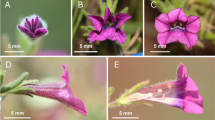Abstract
Insect larvae such as those of yucca moths that feed on small, patchily distributed food items often face an elevated risk of intraspecific competition or cannibalism. For this reason, ovipositing females may assess a potential oviposition site for prior conspecific eggs or larvae before deciding whether to oviposit. Selective abortion of yucca flowers with high egg numbers prevents competition among larvae of the yucca moth Tegeticula yuccasella, but the same mechanism should select for female detection of and fewer ovipositions in flowers that already contain eggs. Female yucca moths presented with either virgin or previously visited flowers laid significantly fewer eggs in the latter flowers and pollinated them less often. A significant negative association was found between number of previous oviposition attempts in a flower and number of additional attempts by a female, suggesting a quantitative assessment of prior egg load, but the correlation coefficient was low. Factors contributing to this low correlation may include variation in signal quality, poor detection capability, uncertainty contributed by a variable oviposition attempt to egg ratio, and a variable response criterion based on recent female experience and physiological status. Females rationed their pollen by pollinating at decreasing frequency during a bout within a flower, and by depositing smaller pollen loads during later pollinations within a flower. Females ovipositing into a previously visited flower pollinated as frequently as would a first female for a given oviposition attempt within a flower, i.e., the probability of pollination after the nth oviposition was independent of whether it was performed by a first or a later moth. Experimental presentation of virgin flowers marked with a homogenate from female abdomens induced the same oviposition and pollination behavior as seen on previously visited flowers, suggesting the presence of a host-marking pheromone. Given that all eggs within a selectively aborted flower die, there may be selection among some yucca moths for providing a strong signal of floral egg status to conspecific females.
Similar content being viewed by others
Author information
Authors and Affiliations
Additional information
Received: 1 December 1998 / Accepted: 7 February 1999
Rights and permissions
About this article
Cite this article
Huth, C., Pellmyr, O. Yucca moth oviposition and pollination behavior is affected by past flower visitors: evidence for a host-marking pheromone. Oecologia 119, 593–599 (1999). https://doi.org/10.1007/s004420050824
Issue Date:
DOI: https://doi.org/10.1007/s004420050824




